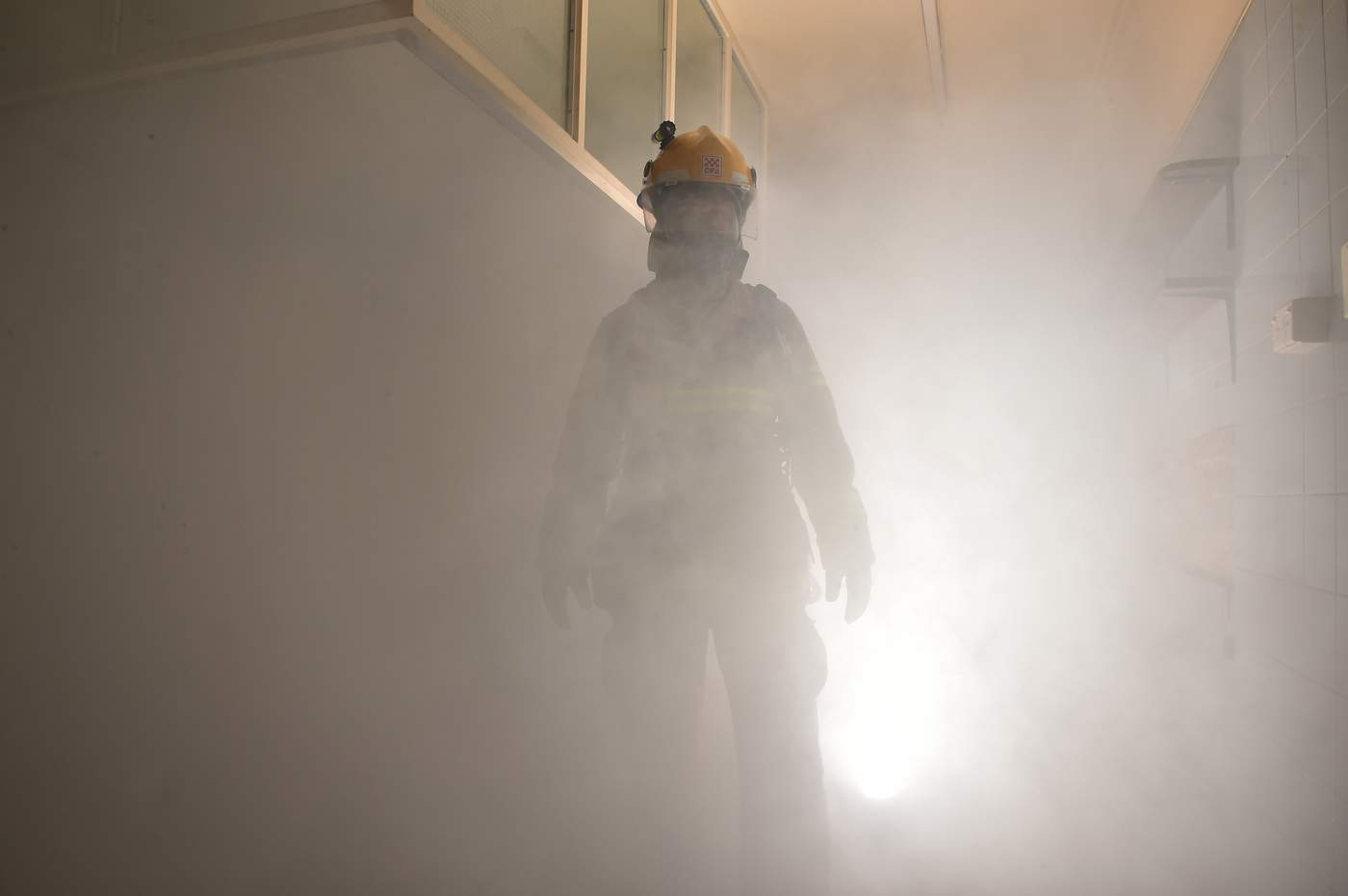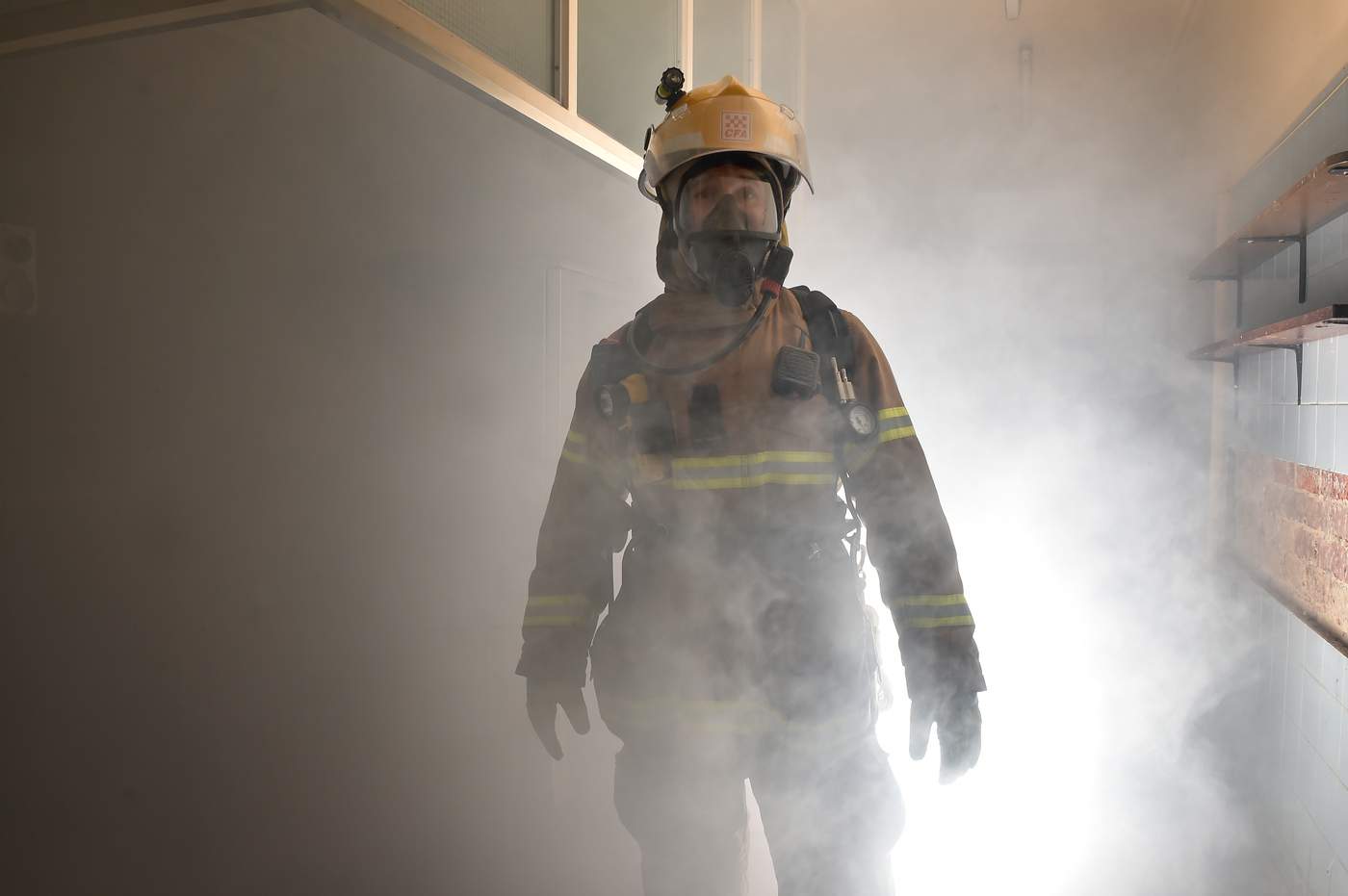It’s 76 minutes into the shift when the first call comes in: a coding alarm at the Quest apartments in McCrae Street, central Bendigo.
It’s the first of six call-outs for the day for the career firefighters on Bendigo’s ‘B-shift’.
They have 90 seconds to gear up and get into the truck, and six minutes to arrive on scene.
“No two jobs are the same,” says leading firefighter Riley Lonsdale. “Even if you go to an alarm, it’s different every time. And every fire you go to is different, you learn something out of every job you go to.”
The 29-year-old has been at the Bendigo station for five years, but with the Country Fire Authority for six-and-a-half years.
“It’s a great job and I love the variety. The CFA, and firefighting in general, you’re constantly working to improve yourself.”
Two new members will join the team at the Bendigo integrated station this month, bringing the total number of career firefighters stationed there to 49.
They work in four shifts (A, B, C and D) of eight firefighters, rotating through days and nights. Four days on, four days off.
The career firefighters support the 50 volunteers also based at the Bendigo station, 23 of which are operational firefighters.
Firefighter Nicole Eames will have been with the CFA for three years in February. With a background in physiotherapy, it was only when her husband’s best friend applied for the CFA that she began to start thinking about firefighting.
“I started reading about it and thought, ‘Oh this actually sounds pretty good’, and so I applied,” she says. “It's good that I did because I’ve loved it. I would never go back to physio.”
She says firefighting combines the things she enjoyed about her career as a physiotherapist - teamwork and helping others - with a more hands-on role.
“This job’s got variety, it’s more unpredictable and it’s more active. Hospitals are a lot of paperwork.”
This morning’s job at the Quest turns out to be a false alarm, but there’s another four jobs within the next hour-and-a-half, sending crews across the city.
Eames says it’s a physically demanding job for anyone, and it takes work to maintain the strength and endurance required of firefighters.
“I do something every day. I swim, I run and do weights and yoga and some days I will do two or three of some of those things.”
From mid-next year, the Bendigo firefighters will also have the added role of responding to all code zero jobs - or potential cardiac arrest patients - with Ambulance Victoria.
“So if someone was walking down the mall now in Bendigo and had a heart attack and fell to the ground, at the moment we wouldn’t be called,” says Lonsdale. “But with the EMR program we would.”
The Emergency Medical Response (EMR) program is being rolled out across the state to integrated CFA stations, with the Bendigo station slated for the next financial year.
The program aims to reduce response time to cardiac arrest patients, improving their chance of survival.
Both Lane and Lonsdale worked in Shepparton when the program was first piloted there in 2011.
“It was really good and you really did feel like you were helping people out,” says Lonsdale. “On my shift over there, we never saved anyone... but the other shifts had saves.
“You only need one save to make it worthwhile.”














